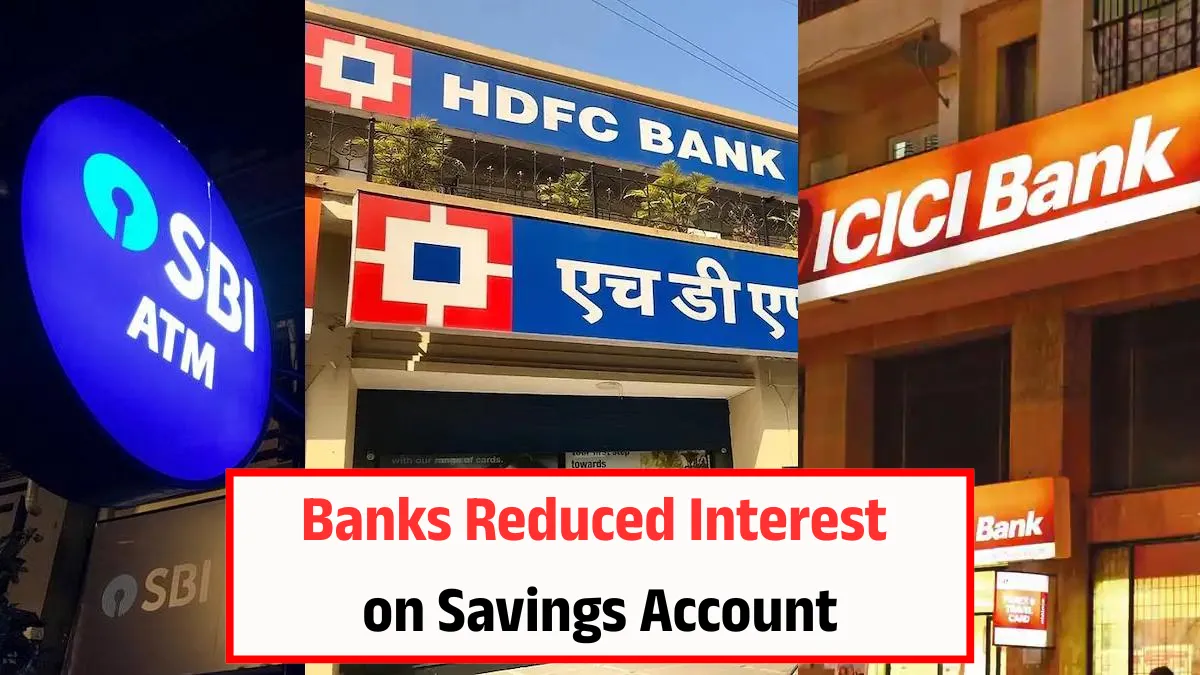Savings Account Interest Rates Slashed by Major Banks in India In a move that will impact millions of account holders across the country, several leading banks including State Bank of India (SBI), HDFC Bank, ICICI Bank, and Bank of Baroda have reduced interest rates on savings accounts.This revision comes at a time when the Reserve Bank of India (RBI) has chosen to maintain its key policy rates. With surplus liquidity in the banking system and a decline in demand for fresh credit, banks are now realigning their deposit strategies, leading to lower returns on traditional savings instruments.
What Are the New Savings Account Interest Rates?
According to the updated bank notifications, SBI has now revised its savings account interest rate to 2.70% per annum for balances up to ₹10 crore. HDFC Bank is now offering 3.00% per annum for balances below ₹50 lakh and slightly higher for larger deposits. ICICI Bank has also moved to a similar structure, offering between 3.00% and 3.50% depending on the account type and deposit value. Bank of Baroda has reduced its base savings rate to 2.75%, making it one of the lowest in the industry.
Why Are Banks Reducing Savings Account Rates?
This trend reflects a broader strategy by banks to reduce their cost of funds amid slowing credit growth. With large inflows into the banking system through government spending and muted demand for personal loans or credit cards, banks are flush with liquidity. Since current account and savings account (CASA) deposits are low-cost liabilities for banks, trimming savings interest helps preserve margins without affecting borrowing rates significantly.
How Will This Impact Account Holders?
For average retail customers who maintain monthly balances below ₹1 lakh, the revised interest may not significantly impact short-term income. However, for senior citizens, pensioners, and conservative savers who rely on savings account interest as a source of regular earnings, this change will reduce passive income. Over a year, the difference of even 0.5% on ₹1 lakh means a loss of ₹500 in annual interest, pushing more savers to look for higher-yielding alternatives.
What Are the Alternatives for Better Returns?
With savings account interest rates at historic lows, customers are now considering short-term fixed deposits, liquid mutual funds, and RBI-backed instruments like Floating Rate Savings Bonds for better yields. Many private and small finance banks are still offering 6% to 7% interest on savings accounts to attract new customers. However, these come with higher balance requirements or digital-only access, which may not suit all users.
Final Take
The interest rate cuts by SBI, HDFC, ICICI, and Bank of Baroda indicate a larger shift in the way traditional savings are treated by banks in 2025. While these changes help banks manage their balance sheets efficiently, they also push retail depositors to rethink their money management strategy. As interest rates continue to evolve, savers must remain alert and actively compare options to make the most of their idle funds.
Read More:
- PM Kisan 20th Installment Date Out? Know When ₹2,000 Will Reach Your Account
- Loan Settlement Rules: Settled Your Loan? Don’t Make This Mistake or Your CIBIL Score Will Suffer
- MEDISEP ID Card Download, Status Check @medisep.kerala.gov.in – Step-by-Step Guide
- GSPay Technology: Now Send UPI Payments Without Internet Using PhonePe’s New Feature
- RBI CRR Cut: Easier Loans for Everyone, Especially Small Business Owners

